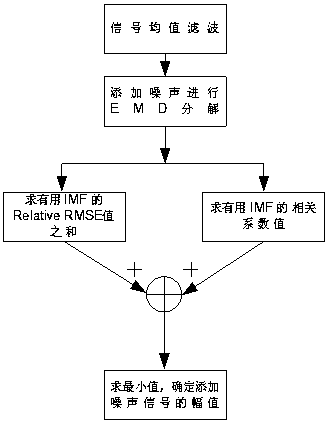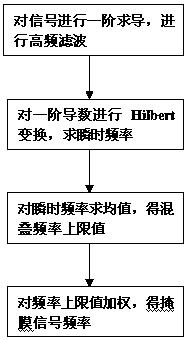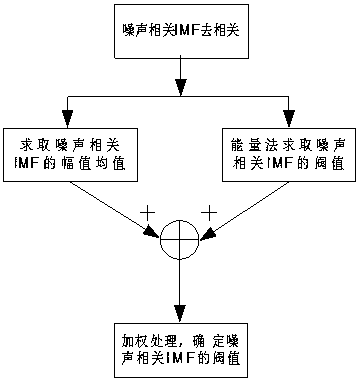A Denoising Method Based on Hybrid Empirical Mode Decomposition
An empirical mode decomposition and noise technology, which is applied in character and pattern recognition, instrumentation, informatics, etc., can solve the problems of non-adaptive filtering threshold, multi-amplitude signal filtering error, and poor filtering signal, etc., to achieve denoising Good effect, eliminate the effect of modal aliasing
- Summary
- Abstract
- Description
- Claims
- Application Information
AI Technical Summary
Problems solved by technology
Method used
Image
Examples
Embodiment Construction
[0023] The technical scheme of the present invention is described in detail below in conjunction with accompanying drawing:
[0024] The basic idea of the present invention is to combine EEMD and MEMD algorithm, and carry out parameter optimization aiming at the mask signal frequency used in MEMD algorithm, can eliminate mode aliasing more effectively, and denoising effect is better; The present invention further improves EEMD The added noise amplitude, noise-related IMF filter threshold, and noise IMF filter threshold are optimized in a targeted manner, thereby further improving the overall denoising effect.
[0025] In order to facilitate the public's understanding, the technical solution of the present invention will be described in detail below with a preferred embodiment. The present invention is based on the denoising method of hybrid empirical mode decomposition, specifically comprising the following steps:
[0026] Step 1. Decompose the original signal by using the ...
PUM
 Login to View More
Login to View More Abstract
Description
Claims
Application Information
 Login to View More
Login to View More - R&D
- Intellectual Property
- Life Sciences
- Materials
- Tech Scout
- Unparalleled Data Quality
- Higher Quality Content
- 60% Fewer Hallucinations
Browse by: Latest US Patents, China's latest patents, Technical Efficacy Thesaurus, Application Domain, Technology Topic, Popular Technical Reports.
© 2025 PatSnap. All rights reserved.Legal|Privacy policy|Modern Slavery Act Transparency Statement|Sitemap|About US| Contact US: help@patsnap.com



